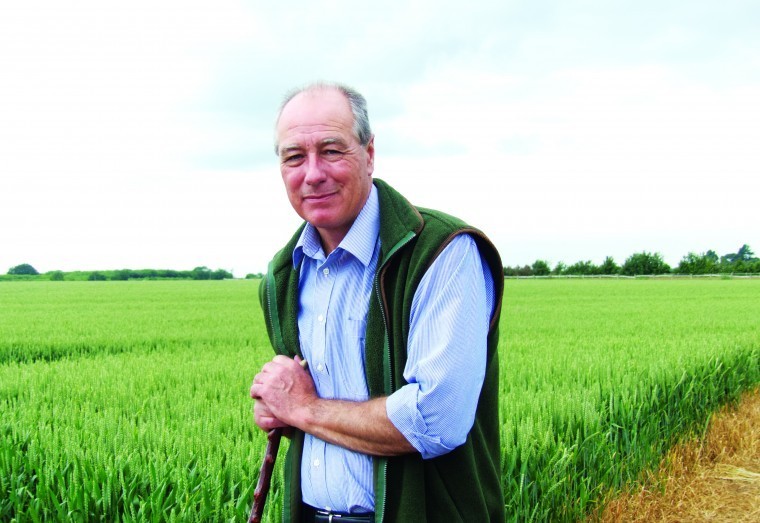The last three years of wet autumns and winters have given us a very different expectation and this year is perhaps more normal if that is not tempting fate.
During a few recent warmer days in mid February crops have showed signs of growth, particularly oilseed rape and first wheat. A side effect of the better weather was that the pigeon pressure eased immediately. Overall this year pigeons have been manageable as they have not been starving. Where we have maize stubbles locally, pigeons continue to feed on them.
We also planted a block of environmental focus area with a mixture of maize and other small seeds and as the weather has taken the plant cover over most of the local pigeons have focussed on that one field leaving the oilseed rape alone. There have been many other bird species on the same field which is beneficial in a general environmental way but the pigeon management is a welcome bonus.
While the weather is the main influence on pigeon behaviour another noticeable change is their indifference to buzzards whether flying or sitting on vantage poles. In the past the presence of any raptor would have had a deterrent effect on pigeons but that seems to have faded with the large number of buzzards that we now have. I believe that has also led to a fall off in effectiveness of the hawk kites that we sometimes use. I say sometimes as clearly we cannot use kites in any urban fringe areas as they simply walk or fly away. We have also tried a laser to disturb pigeons and in certain light they are effective especially where pigeons are sitting in trees around field boundary’s not doing much for most of the day but feeding before roosting when they are determined.
Disturbing them during the afternoons does at least direct them away from our oilseed rape although probably only to the nearest neighbour. As ever with pigeons it is a matter of evolving methods to deal with them during the late winter months before spring drilling and clover growth provides alternative food.
Looking at crops, in the oilseed rape Kerb continues to work well and even where there are green grassweeds upon detailed observation of the roots the tell tale bulbous nature indicates the product is working and when proper spring growth starts competition will finish the control.
That may not work quite as well on the thinner patchy crops but we will only see as the spring progresses whether the Kerb runs out of steam and blackgrass emerges. By that time it will probably be glyphosate for the worst areas and too late to put an alternative crop in the ground. But at least we will not be undermining the blocked cropping on our outlying farms.
Where we have planted clearfield varieties the broadleaved control is as expected excellent albeit at a cost in seed rather than chemicals. We will be starting spring nitrogen applications to the oilseed before February is out. This year we are using Yara Axan 27N -9S to combine nitrogen and sulphur applications. I have always been convinced by the research on the benefits of sulphur to oilseed and wheat in our current clean air environment but have struggled to spread some sulphur products to 36 metres.
There is also the concentration in single dressings of a mineral that leaches easily and the time lag that ammonium sulphate has in becoming available as the nitrogen form changes in the soil. With the Axan we will be using it season long to give regular small quantities of sulphur with nitrogen through the spring growth period.
Second wheats will also get a first dressing to push them along and we will get to the first wheats when weather permits in early March. Our intention is to split the Axan into three applications on all the wheats as the slightly lower concentration of nitrogen spread at 36m gives a kilogram per hectare of product that can be a bit challenging to spreader capacity in large fields.
I cannot help returning to the subject of Brexit as it is going to be so important to our industry over the next two years. Out of the single market achieving reciprocal tariff free access to the European market is critical not only for the market access for our goods but to ensure our government is committed to a common European external tariff with the rest of the world. That is the first priority and is probably more critical to our industry than any support we can expect under a new domestic agricultural policy. As I have mentioned before somewhere in that policy we will see a push for continued environmental delivery not just in the special high value areas but across the whole countryside and while it is important for many farmers it is critical for many environmental non governmental organisations as they know farmers are the only way to deliver environmental benefits across the whole country. As long as that delivery is voluntary then we can engage with government about the cost and how any scheme is delivered by the industry in a sustainable way by a productive and profitable agriculture. There is a long way to go and no doubt there will be many twists and turns along the way but as a starting point to establish some principles with government that would be positive. When spring properly arrives I will probably forget all the politics and negativity for a while and just enjoy farming for a few months.




